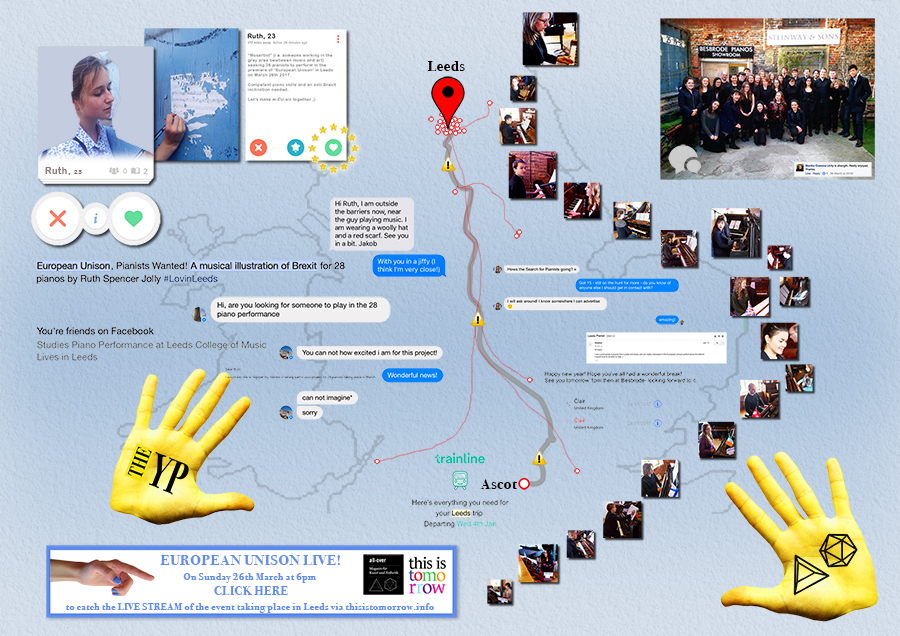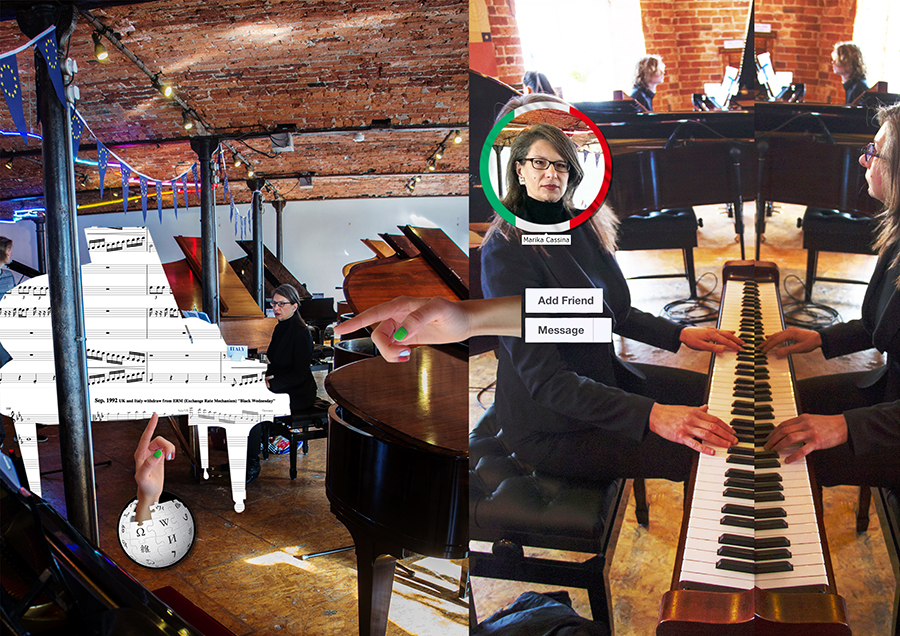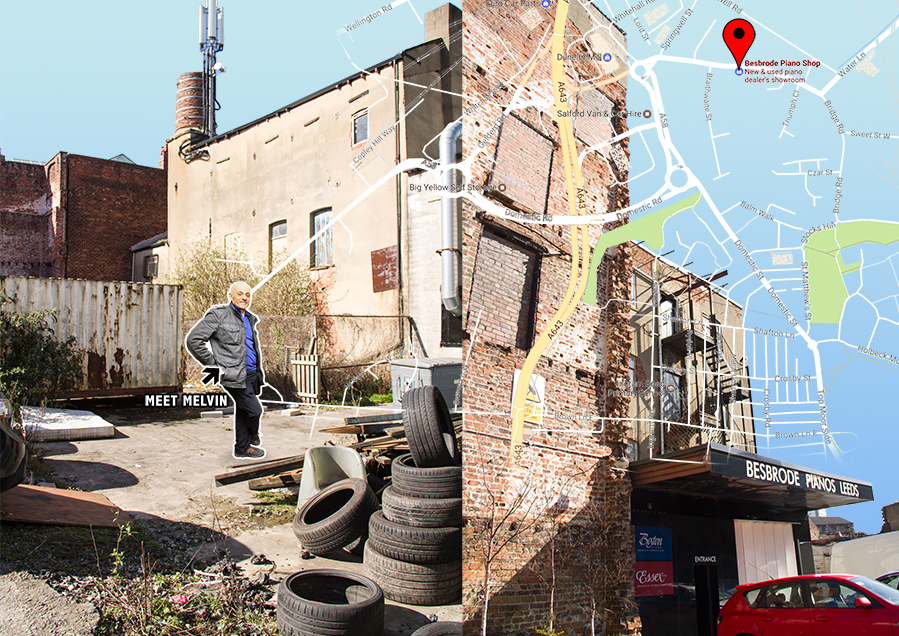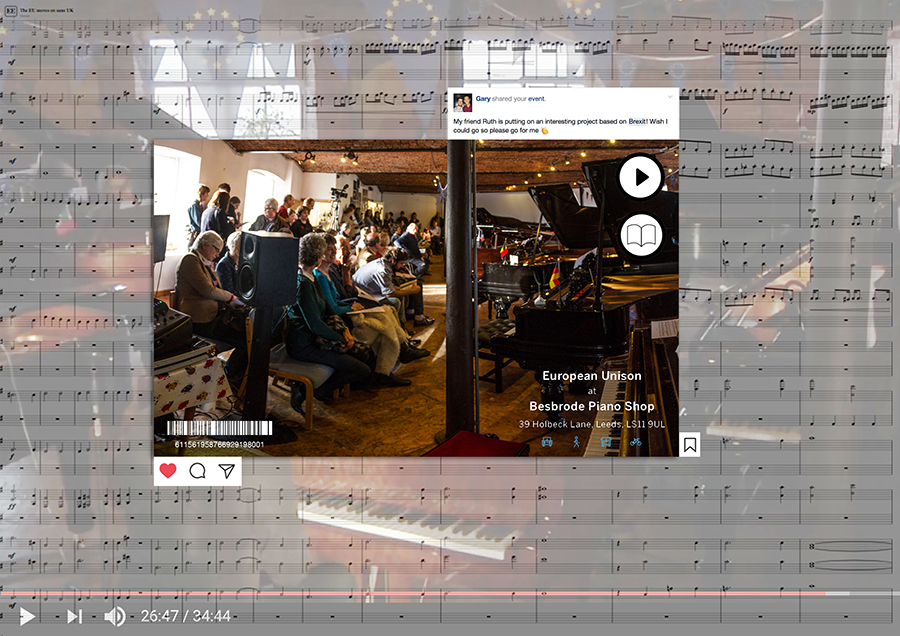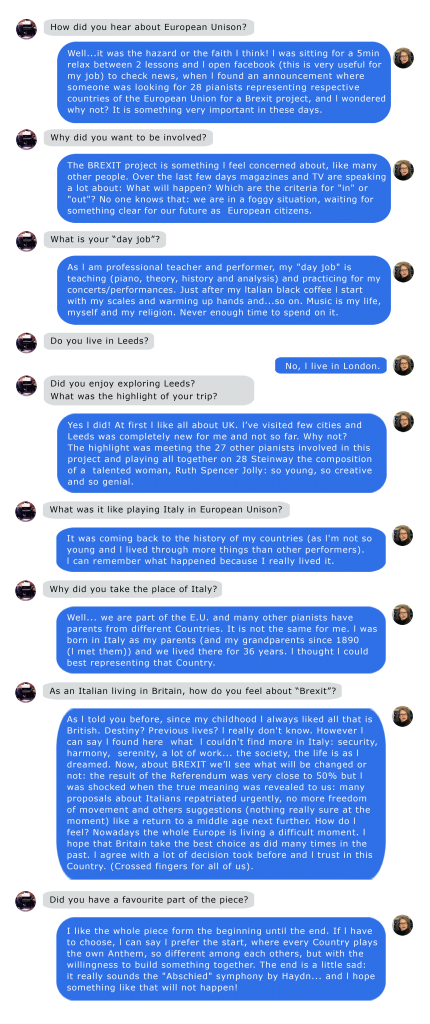As a key figure in the formation of queer studies, Jonathan D. Katz has a lot to say about building an academic career in the traditionally conservative field of art history. He has worked with and at some of the most prestigious US institutions like the National Portrait Gallery and Yale University, and was rejected by others throughout different stages of his career. In 2010, when Hide/Seek. Difference and Desire in American Portraiture—an exhibition focusing on sexual difference in painting and photography from the 1880s to the 2000s[1]—opened, Katz and co-curator David C. Ward faced censorship that echoed the Culture Wars of the ‘80s.[2] In this interview we discuss Katz’ experiences as a queer art historian—contextualized by the recent history of the field in the United States—that reveal his methodological quest to account for the diversification of the identities not only of those who practice art history but also of the key subjects under consideration.
Barbara Reisinger Let’s get back to when you started out as an academic. Was there actually a point—possibly when you were a graduate student—when you realized that you would be working in academia and that you would be pursuing that particular path?
Jonathan D. Katz Yes, I mean, I went to graduate school specifically to become a professor and I formed that idea when I was 21. I realized that the world I found most compelling was the scholarly world.
br What was art history like at the time you entered the scholarly world? Was there a specific, strong or dominant approach that was defining the field? And what did you make of that?
jk Broadly, in the United States Greenbergian formalism ruled the roost. It was the dominant methodology. We still talked in terms of flatness. Social history was considered quite daring; T.J. Clark was an outsider. However, I was a foot soldier for formalism, and when I acknowledged that I was queer, I realized that this approach, that made the painting its own world, segregated from the social, was part of my closet and that I needed to recognize the degree to which art constitutes a social artifact. That really became then the direction of my work. What is important to say here, is that at that moment the art world—however homophobic it is now—was vastly more homophobic. The academy was virulently homophobic. To give you an example of what I mean by that: When I was at the University of Chicago I proposed a dissertation on the relationship of Johns and Rauschenberg and its implications for their art. And I was told that if I would do that, my fellowship would be cut in half.
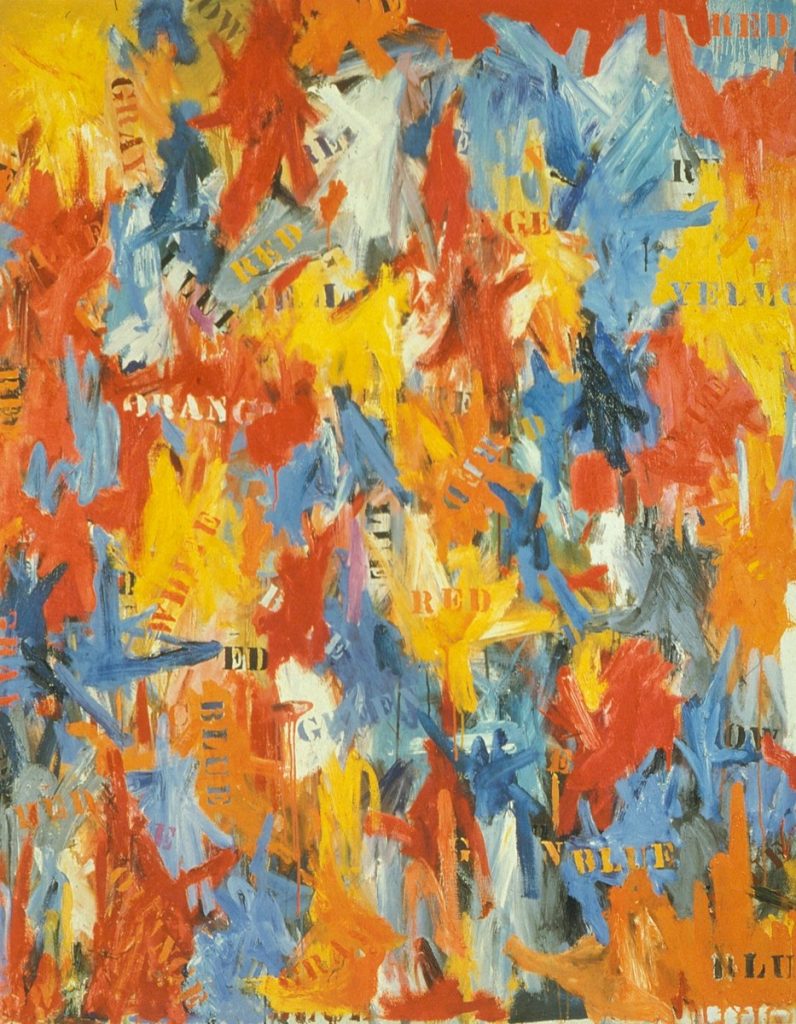
Fig. 1: Jasper Johns, False Start, Oil on Canvas, 170,8 cm x 137,2 cm, Private Collection, David Geffen, Los Angeles.
br So, how did you proceed with your dissertation?
jk Oh, I did it anyway, but I didn’t do it at the University of Chicago. I told them that I was not willing to be censored and I left. I went to work with Michael Fried at John Hopkins thinking, stupidly, that he was the perfect person to advise a queer studies dissertation precisely because he was so instrumental in creating this formalist ideology that I assumed he was over with it. Turned out that he was not over with it. So, I kept wandering through different graduate schools until I had essentially my last chance to finish my degree at Northwestern University.
br But you arrived at a different perspective on US universities, I imagine, much different from the one you would have gotten had you taken just the usual PhD courses.
jk That’s true. I like to joke that I got thrown out of the best. But then, even working on living artists was considered completely unacceptable. The idea of politically engaged or informed scholarship was inherently suspect. There was still a discourse that art history was to be ideologically neutral, as if such a thing could be achieved. And that, if you came into it with an issue that you wanted to explore, you were not a good scholar because you were not neutral. I remember one of my advisors say that I was writing a flawed dissertation because I was letting ideology lead me instead of letting the work lead me, as if somehow the work had an intrinsic voice that I was ignoring by paying attention to its social and political ramifications.
br That is, interestingly, a point at which the formalist standpoint is linked to a post-structuralist one, both considering the work or the text as the authority. We can return to this issue later, but first I’d like to discuss a more pressing question in relation to your formative period as an academic: It was the ‘80s, and the AIDS crisis surfaced. How did you experience that, and how did it interfere with your academic practice?
jk Good question. At this point, in the very early ‘80s I had pursued my academic work and gay activism as separate tracks of my life, each equally important, consuming equal amounts of time. But I was building activist organizations, doing street protest and doing my scholarship as separate parallel tracks. With AIDS I could no longer ignore the connections between these two worlds because it felt like in one world I was living amidst a plague, an apocalypse, and in the other world that did not even register. It was like some kind of schizophrenia, and so I became quite invested in pushing forward queer art history. It was highly controversial. When I was doing my dissertation I had Kaposi’s sarcoma, one of the opportunistic infections associated with HIV. Now we know that it is the product of a depressed immune system and can occur because of non-HIV related causes, but at that time it was understood as a symptom of AIDS. When I was diagnosed with Kaposi’s, my doctor said that it was unlikely I would live out the year. So, throughout the period in question I also understood myself as a person with AIDS, and that made me very angry, made these issues much more pressing. And it gave me a desire to make sure that I not only was able to do a project in art history that was capable of producing social change, but that I also dedicated myself to larger questions of social change in the limited time I had on earth.
br And you were, at the time, still working on art of the ‘50s.
jk Yes, and it had all kinds of ramifications; the academy was such a politically backwards institution. I had professors challenging me on whether it was appropriate for me to be in class, there were class parties and I found out, because they thought I had AIDS, that I wasn’t invited or was actively disinvited. It was only years later, when it was finally proven that I was HIV negative, that I decided to finish my dissertation and get on with life.
br So, was there any place where you could discuss what you were doing? What was your platform to talk about academic and art historical matters, if you were not supported by the academy?
jk There really was no place. There was no discourse. When I sought to present my work, there was no place that accepted any presentation, until in the late ‘80s a group got together and formed a gay and lesbian studies association.[3] Initially, it met at Yale, then it met at Harvard once, at Rutgers once, annually at several institutions. And every time there was a gay and lesbian studies conference, I presented. And, I should say, much to the chagrin of my advisors I presented wearing pearls. But it felt important to me to mark out a public distinction from normative academic dress and social and cultural codes and morals. I was very physically active in those days because I felt like—in order to strengthen myself against HIV—I had to work out on a regular basis. So I had a very good body and I would wear T-shirts, that I cut off at the chest so my tummy was showing. My advisers literally wouldn’t look at me, I was too embarrassing for them to look at when I dressed like that. And I gave papers like that.
br At that point, it seems, your academic practice and your life really interlinked. In relation to that, did initiating what later became queer studies give you a different perspective on the significance of the artist’s life for art history? Since your project was on Johns and Rauschenberg there is a strong emphasis on their lives or aspects of their lives to begin with. Did the very harsh changes you went through working on your PhD change your methodological views?
jk Well, there has been a strong practice in contemporary post-structuralist theory against attending to questions of the artist’s life and subjectivity because that is murky ideological territory. You can make the artist’s life do anything—that has always been the claim. I came into this at a moment of a particularly strong effort to police any kind of attention to life or biography. I have always resisted those attempts because it seems to me that we ought to think about what it means that at a moment of feminist, queer and raced, social and political development in the academy, all of a sudden it rules biography out of order. That’s not by happenstance. That’s not just an accident. It was part of an ideological policing.
br In that case, I think, post-structuralism came in handy to bend it against its own interests, turning the death of the author into a taboo surrounding the author or the subject.
jk It always offended me that we were able to talk about the death of the author but being shamefully silent that it was no longer a metaphor—that thousands of authors were dying and we were not paying any attention. And I realized that while, of course, biographical information is subject to misuse, so is every other kind of scholarly evidence. In the case, for example, of Johns and Rauschenberg, attending to questions of sexuality changed the meaning of the painting drastically. It changed the meaning to the extent that it became clear that much of the work was engaged with the identity of things. There was parallelism between that query into identity and larger questions of how we identify or name things. So, to put it concretely, you have Johns doing a series of paintings of flags and targets, of numbers and letters, all of which constitute social abstractions. They aren’t real in the sense that if you took someone who was segregated from twentieth century life and asked, what it was, they couldn’t name it like they could name an apple or dirt. It requires a social and cultural body of knowledge. And when I realized that Johns was engaged in testing the limits of what it meant to talk about knowledge that was premised on forms of social and cultural insight, I realized that he was really engaged in a project about the formation of identity. And that’s very clear, for example, if you look at his painting False Start, which consists of letters spelling out the names of colors in color on colored backgrounds (Fig. 1).
br And the colors that are written there don’t match the actual colors.
jk Exactly. And what that picture does is point out that there is a gap that opens in the identity of something and what fills that gap is the social, a cultural contract or custom or norm. What I realized, therefore, was that an individual who was herself marked as unnatural by dominant culture had an investment in making clear that the natural was not a default construction but that it was itself essentially a function of power.
br How did you find a way of speaking in this constellation? You already talked about how you performed a different academic position. In writing, how would you mark your position as an author—as a way to acknowledge the impossibility of speaking from an unmarked position?
jk I essentially figured that there are always different voices and audiences in play. You know, there is this notion of the audience in art history that is, a singularity. But in truth, there is no such thing as the audience—it’s a construct of art critics and not surprisingly, it always tends to resemble them. In fact there are always multiple audiences with multiple levels of interest and competence. For example, there may be a specific person, or group that an artist is seeking to directly address and at the same time there is another, less intimate audience more or less involved with the work. Then there is a general public, divided by different social backgrounds and preconditions for their understanding, and even that general public may be further subdivided into historical and contemporary populations. Artists speak out of different sides of their mouth to different populations all the time. So difference inhabits the notion of audience at every level, and where I can, I try to articulate that multiplicity of understandings and voices.
br So also on that level there are different perspectives and approaches, instead of having just one opinion as a norm for everyone. And, especially with activism, it becomes important to address different audiences, not just the academic community. Since you curated a lot, was that a way for you to engage more people in questions of identity, to reach more people than you would have reached with an academic article?
jk Exactly right. I felt that if my goal was social, addressing myself exclusively to the academy was deeply problematic. I needed to find a means of communicating more broadly.
br That turns the exhibition into a quite potent tool. I was thinking about the question what kinds of differences there are between writing a text about something and making an exhibition on the same topic.[4] Up until now, I did not consider the simple fact that an exhibition reaches more people. But, of course the exhibition also includes text.
jk What I came to realize was that even if I don’t—and can’t—expect people to read the text, I needed to be engaged with their thinking at the level of the exhibition itself. So that my exhibitions do various kinds of theoretically sophisticated intellectual work without requiring you to read the text. I’ll give you an example: Hide/Seek has straight artists and queer artists, so immediately it raises questions of essentialized identity. Also, because I expected the exhibition to be attacked on grounds of sexuality, I made sure all artists (with the exception of one) who did male nudes, were heterosexual.
br As an expert in art of the United States, did you ever consider the differences for queer studies in the American and the European context?
jk I have thought about this, and what I have found—and this is what I am working on in the new book—is that the ‘60s really is a moment in Europe as in the United States, in which the question of sexual orientation is essentially dissolved; not ignored but dissolved.[5] By that I mean that it is understood that naming a minority identity is also a means of controlling that identity. That if you identify a particular identity or community as a minority one, then you will always consign it to a position of secondary importance. Consequentially, a lot of the artists in the ‘60s began to believe in the body unmarked by any differences, including those of sexuality, race or gender. In fact, the new book is really about this moment before the advent of modern identity politics, which was essentially the moment that invested the body, initially, with a liberal and liberationist politics.
br So, in the ‘60s, the idea of an unmarked body is discovered because there is the realization that there are marked bodies?
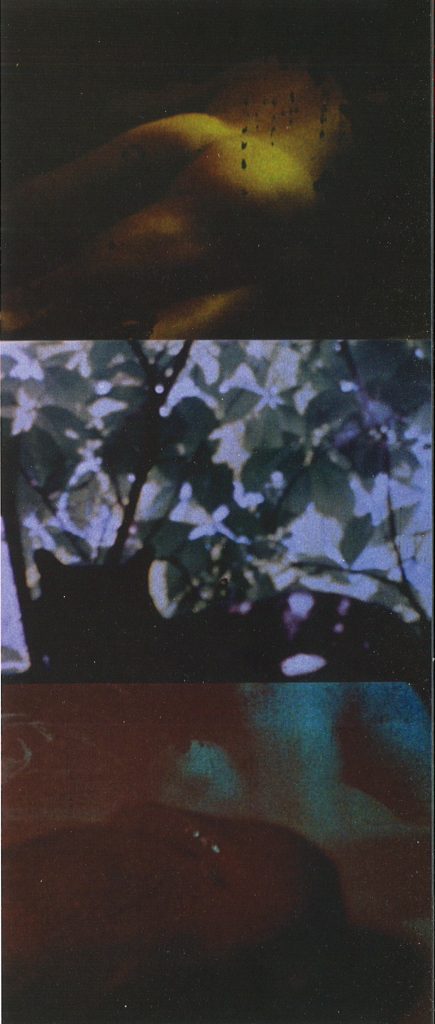
Fig. 2: Carolee Schneemann, Fuses, 1964–1966, Selfshot 16 mm film, color, silent, 30 min. Digital Video stills.
jk The body is conceived specifically as unmarked, theorized as unmarked. Let me give you an example of what I am talking about. In a 1964 film called Fuses (Fig. 2) Carolee Schneemann has her partner James Tenney lying on his side—she cuts and dyes, and otherwise manipulated the film, so it moves in and out of legibility—so he is lying on his side and you see him from the back, you see his buttocks, the curves of what you assume to be a classically female odalisque. And then he turns over and you see he has an erect penis. She is playing with our assumptions in order to completely derail them. All the bodily differences are in play—and none defines a body more than any other. And that happens years before Interior Scroll, which is 1971, the work Carolee Schneemann is perhaps most famous for today. That’s the moment I am talking about, before an explicitly feminist, marked body.
br This reminds me of the specific reading that Rosalind Krauss and Hal Foster give of minimal art and the art of the ‘60s that I cannot agree with—but your reading would turn that around. Krauss and Foster seem to maintain that the “phenomenological” perspective of minimalism conceives the body as a universal one to which gender or race isn’t relevant. And then gradually in the ‘70s and ‘80s feminism and other movements bring this perspective into art. And you would shift the perspective on the unmarked body of the ‘60s to the opposite: It is not a naive idea that becomes more sophisticated with time but it is itself a reaction to the distinctions between marked bodies that are dissolved.
jk This idea that art learns from culture—that art is involved with marked bodies only after larger cultural movements expose sexual differences and their ramifications—makes us believe that somehow art and culture are separate. But art and culture are always engaged at the same time with one another.
br Yes, that is certainly something that art history needs to work on.
jk As a discipline art history is behind other disciplines by 50 years. We have debates that were settled in the immediate post-war era in other fields.
br Speaking about the conservatism not only in the academic field, but also in museums: You told me of the difficulties to find places to host events that address queer issues. When you were doing the exhibition Hide/Seek, how was it to work at The National Portrait Gallery? I guess, there is a lot of pressure on this kind of institution because it is supposed to officially represent the culture of the US.
jk Yes and no. I find, actually, that it is the private institutions that are more politically conservative than the public ones which is exactly the opposite of what you would think. In the United States at least, that is, because the non-public institutions are reliant on donors. And wealthy people are politically conservative and even if they are not, they are expected to be. So, there is a chilling effect in private institutions that I find, curiously, does not happen to that extent in public ones. But the private and public sectors are not neatly separated. In the United States there is only a fine line between private organizations and the massive so-called public institutions, like the Metropolitan Museum, the Whitney Museum or The Museum of Modern Art, that are all supported by a donor class that is understood to be politically conservative.[6] An organization like the Museum of Modern Art could do a queer exhibition with much less of the political and social danger because they have the power to insulate themselves. But they don’t. In fact, they are the most conservative organizations, these rich, powerful institutions. And, paradoxically, it’s the most exposed organizations, like the Smithsonian, that take the risks.
br In that respect, the misconception of “neutral” theory that you have described before—the idea that ideologically engaged scholarship is intrinsically flawed—also seems to serve the institutions outside the academy. If there are to be no queries into art with specific political attitudes, and art itself is expected to be apolitical, there can hardly be any controversies raised by artworks or exhibitions that could damage the reputations of institutions or donors.
jk You know, the problem has always been high value commodity. That controls what we can say. And we can’t escape it at the most basic level. If you write an article and you want to illustrate it with a work of art that is owned by someone who doesn’t like your argument, you’re screwed. And that’s even more the case with artist foundations that are engaged with censorship. And yet we as a field don’t point a finger and say: censorship! And we need to.
Jonathan D. Katz is a pioneering scholar of sexuality in post-war art and culture, he is Director of the Doctoral Program in Visual Studies at the University at Buffalo, and President Emeritus of the Leslie-Lohman Museum of Gay and Lesbian Art in New York, the world’s first queer art museum.
[1] Hide/Seek. Difference and Desire in American Portraiture. 30 October, 2010 – 13 February, 2011, National Portrait Gallery, Washington, D.C., http://npg.si.edu/exhibition/hideseek-difference-and-desire-american-portraiture. Online exhibition: http://npg.si.edu/exhibit/hideseek/index.html, accessed: March 23, 2017.
[2] See, for instance, news coverage in The Guardian: Brian Logan, Hide/Seek: Too shocking for America, December 5, 2010, online: https://www.theguardian.com/artanddesign/2010/dec/05/hide-seek-gay-art-smithsonian, accessed: March 23, 2017. David Wojnarowicz, whose video Fire in my Belly was removed from the exhibition, had already been involved in a controversy around his catalogue essay for Nan Goldin’s exhibition Witnesses. Against Our Vanishing in 1989 that responded to the AIDS crisis.
[3] The Gay and Lesbian Caucus of the College Art Association (now called the Queer Caucus) was formed in 1989 on Katz’ initiative. It, and The National Gay and Lesbian Studies Conferences were the only places to present queer themed work in art history in the eighties.
[4] See my interview with curator Søren Grammel, in: all-over 09, Autumn 2015, URL: http://allover-magazin.com/?p=2185.
[5] A short assessment of the subject can be found in the article, Jonathan D. Katz, Naked Politics: The Art of Eros 1955-1975, in: Jongwoo Kim/Chris Reed (eds.), Queer Difficulty in Art and Poetry. Rethinking the Sexed Body in Verse and Visual Culture, New York 2017, 74-86.
[6] In contrast to Europe where combinations of public and private funds in state-run art institutions is still relatively new, the public art museums in the USA depend on their boards of trustees for a large part of their funding. The boards are typically occupied by wealthy art collectors who sometimes hold their positions for life. But these so-called public institutions are distinct from real public museums like the Smithsonian, which are overwhelmingly funded using public tax dollars. As a result, museums such as the Smithsonian are inevitably caught up in Federal politics.

